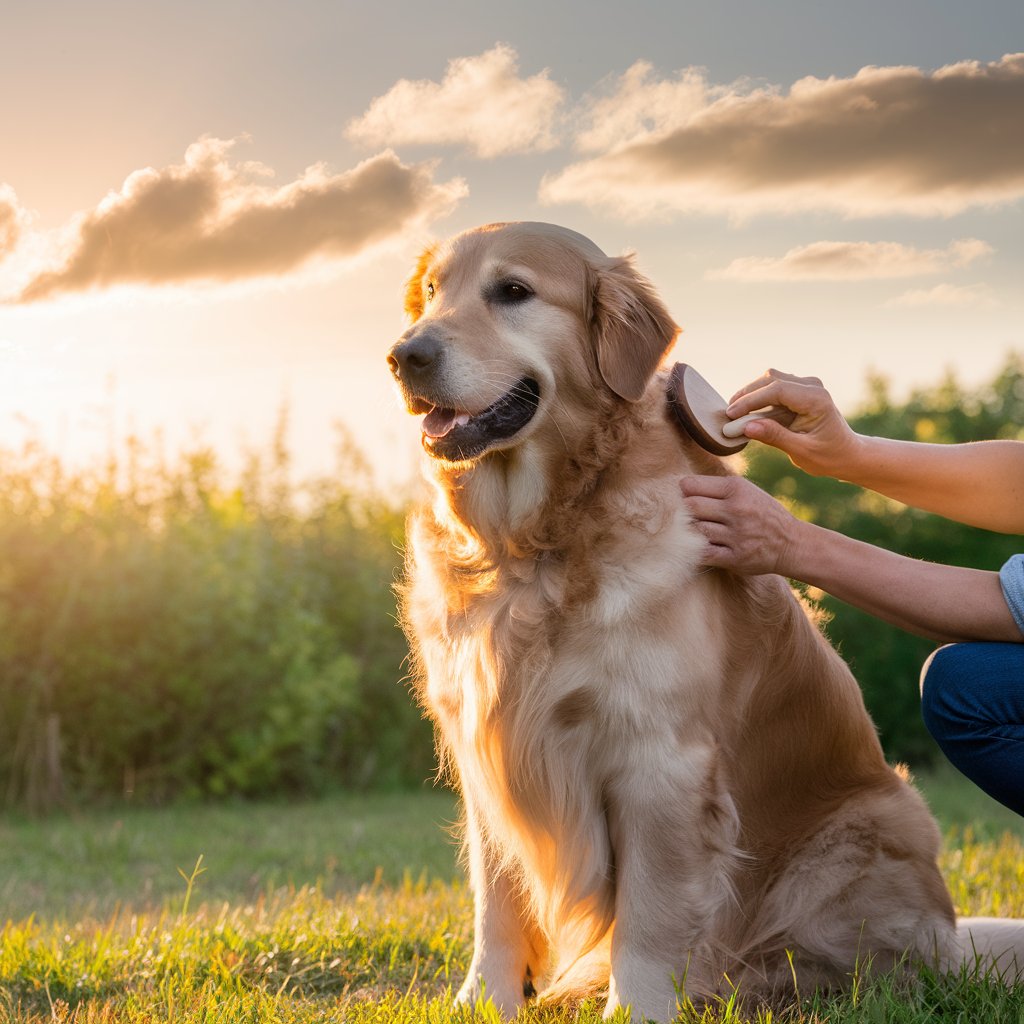Maintaining the health and wellbeing of your dog requires regular grooming. Various breeds require different amounts of maintenance depending on their size, lifestyle, and type of coat. This thorough guide offers grooming advice for different dog breeds so that your pet has a happy, healthy coat.
Recognizing Different Types of Coats
Prior to going into detailed grooming advice, it’s critical to comprehend the various dog coat types:
Short Coat: Dogs with short, silky coats that require little upkeep include Beagles, Boxers, and Dalmatians.
Long Coat: To avoid matting, breeds with long, flowing hair, such Yorkshire Terriers, Afghan Hounds, and Shih Tzus, require frequent brushing.
German Shepherds and Huskies, as well as Golden Retrievers, are double-coated breeds with a thick undercoat and a longer outside coat. To get rid of stray hair, this kind of coat needs to be brushed frequently.
Curly Coat: The curly or wavy coats of Poodles and Bichon Frises require frequent cleaning and grooming.
Wire Coat: The wiry, rough coat of breeds such as Airedale Terriers and Wire Fox Terriers requires frequent trimming or hand-stripping.
General Advice on Grooming
Certain general dog grooming procedures are helpful for all breeds:

Frequent brushing helps keep hair free of tangles and loose particles of debris. The type of coat determines the frequency and kind of brushing.
Bathing: Consistent bathing maintains a clean and healthy coat. To prevent skin irritation, use a shampoo made especially for dogs.
Trimming nails: Keeping nails clipped helps to avoid pain and possible harm.
Ear Cleaning: Enzymes can be avoided with routine ear examinations and cleanings. Make use of the ear cleaning that your veterinarian recommends.
Dental Care: To avoid dental problems, give your dog a frequent brushing.
Tips for Grooming Certain Breeds
Breeds with Short Coats
Breeds to Consider: Beagle, Boxer, and Dalmatian
Brushing: To remove loose hair and distribute natural oils, use a bristle brush or grooming mitt once a week.
Bathing: Take a bath as often as necessary, preferably every 4-6 weeks. Make sure you rinse the coat completely to prevent skin irritation.
Extra Care: Frequently check for parasites and skin issues.
Breeds with Long Coats
Breeds to Consider: Yorkshire Terrier, Afghan Hound, and Shih Tzu
Brushing: To avoid tangles and matting, brush your hair every day using a comb and a slicker brush.
Take a bath every two to four weeks. To maintain a manageable and smooth coat, use a conditioner.
Extra Care: Give frequent haircuts to the hair surrounding the eyes, paws, and sanitary regions.
Breeds with Double Coats
Examples of Breeds: Golden Retriever, Husky, and German Shepherd
Brushing: To remove loose hair and avoid matting, brush your pet two to three times a week using an undercoat rake and slicker brush.
Bathing: Take a bath every six to eight weeks, or more frequently as needed. Do not overbathe as this can remove natural oils.
Extra Care: Brush more frequently to control shedding throughout the spring and fall shedding seasons.
Breeds with Curly Coats
Examples of Breeds: Bichon Frise, Poodle
Brushing: To avoid mats, brush every other day with a metal comb and slicker brush.
Take a bath three to four times a week. For soft, moisturized curls, use a moisturizing shampoo.
Extra Care: To keep the coat at a manageable length and avoid matting, trim it on a regular basis.
Breeds with Wire Coatings
Breeds to consider are Airedale Terrier and Wire Fox Terrier.
Brushing: Use a slicker brush and comb once a week to remove any dead hair.
Hand-Stripping: To keep the coat’s texture, hand-strip it every three to four months. Regular pruning can assist if hand-stripping is not practical.
Take a bath every four to six weeks. To keep the coat’s texture harsh, use a shampoo that enhances texture.
Particular Points to Remember
Dogs: To help your puppy become accustomed to the grooming process, begin early. Keep sessions brief and constructive, and use soft brushes.
Elderly Dogs: Dogs who are older may have delicate joints and skin. Use gentler brushes and exercise patience and gentleness.
Sensitive Skin: For dogs with sensitive skin, use hypoallergenic grooming products. See your veterinarian for suggestions on products.
Professional Grooming: Professional grooming may be necessary for certain breeds. Your dog’s coat can be kept in good condition with routine trips to a skilled groomer.
In summary
More than just keeping your dog attractive, regular grooming is essential to their general wellbeing. You can guarantee that your dog has a happy, healthy coat by learning about their unique grooming requirements and creating a regular grooming schedule. It’s important to be consistent and take care of yourself whether you groom yourself at home or hire an expert. Along with looking fantastic, your pet will feel their best, making for a happier, healthier life together.
